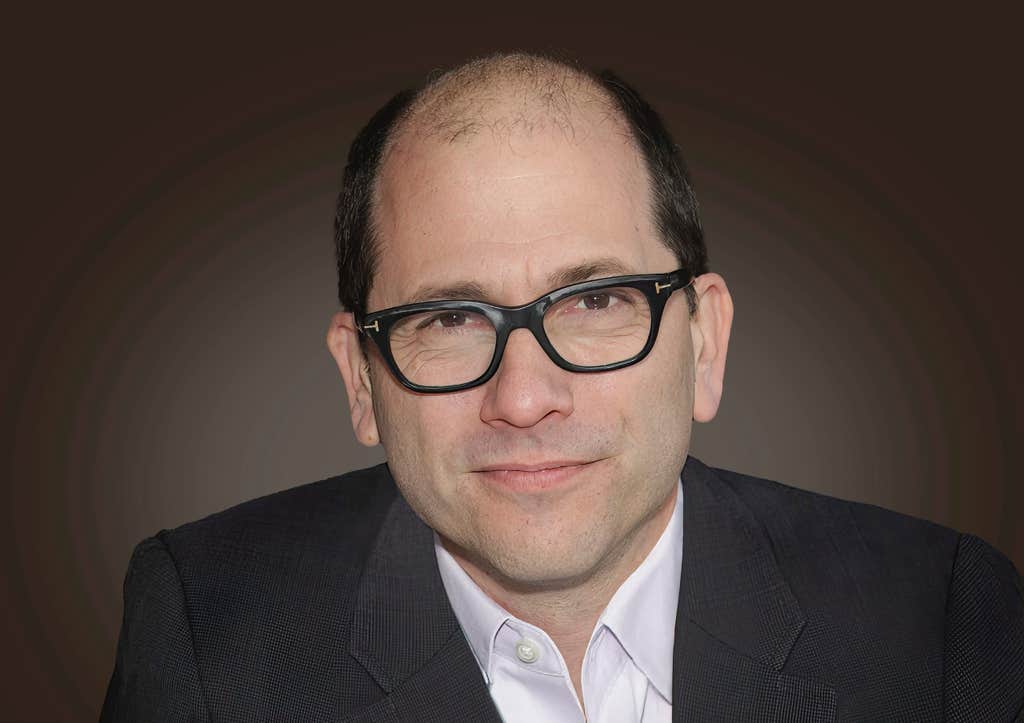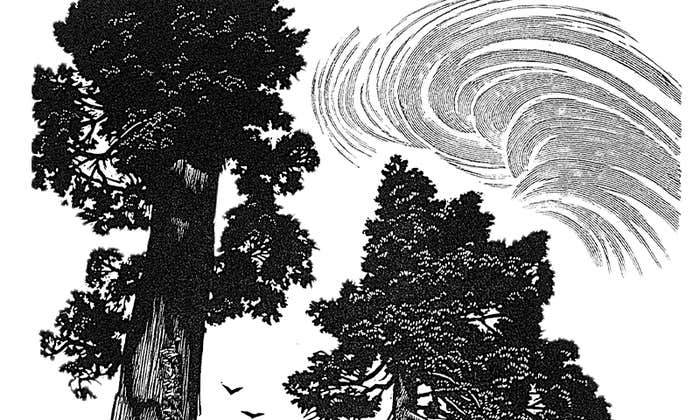1 Work and Play Can Be Indistinguishable
Long before I began work on The Impossible Man in 2018, I thought of Roger Penrose as a man at the center of two entirely separate mythologies: one as a mathematical physicist who decoded the inner workings of black holes and who forced the physics community to reckon with the limitations of relativity and quantum mechanics; the other as the creator of the impossible Penrose Triangle and the obsession-inducing, never-repeating patterns of Penrose Tiles. While his serious scientific work and his recreational mathematics both embodied a hyper-developed sense of simple, elegant, visual beauty, the two endeavors seemed completely incongruous. How could someone so immersed in esoteric, often fractious scientific arguments also exhibit such joyous, almost child-like wonder at the strange and dazzling ways shapes can fit together?
Penrose had learned from his father—a renowned geneticist who made his own jigsaw puzzles and carved wooden toys that mimicked the process of self-replication—that work and play go hand in hand. It’s often impossible to determine which one he was engaged in at any given time. The subject matter that delighted and fascinated Penrose—complex numbers, conformal geometry, unexpected simplicity, and the instinct that beautiful theories were more likely to be correct—crisscrossed through his peer-reviewed papers and his puzzles, games, and mathematical oddities.

In the early 1960s, Penrose was already deep into the relativity research that would revolutionize the field (and ultimately win him a Nobel Prize). He was also playing with puzzles and “impossible objects” like the Penrose Triangle, partly inspired by the work of M.C. Escher. Escher and Penrose met in 1962 at the artist’s home and studio in the Netherlands. Penrose gave Escher a wooden tiling puzzle he designed and crafted. Escher invited Penrose to choose a print for himself from a stack on his workbench. Penrose chose Fishes and Scales, an image in which small fish seem to grow endlessly into larger fish as a viewer’s eyes chase them around and around the page.
Fishes and Scales used “conformal geometry,” a branch of mathematics Penrose knew well, and loved to play with. Years later, when his research led him to challenge some of the key elements in the story of how our universe began, conformal geometry formed the basis of his alternative hypothesis: a theory of “conformal cyclic cosmology” that centers around an endlessly expanding universe. Recreational mathematics and theoretical physics draw on the same concepts, and in the right hands, creative inspiration can turn them into a new mental toy for an idle moment, or a new tool for understanding how our universe came to be.
I work with words, rather than shapes or equations. I instinctively treat wordplay as a guilty pleasure—something I indulge in too often when I should be writing. I’ve learned through writing this book, though, to embrace the time I spend doing crosswords, playing Scrabble, solving puzzles with my sons, or working on The New York Times’ Spelling Bee as a valid part of my creative process.
2 Reality Can Be Unexpectedly Simple
When Roger Penrose was 9 years old, he became fascinated with the fact that 2 plus 2 equals 2 times 2. He spent an inordinate amount of time thinking and searching for another pair of numbers whose sums also equal their product. Finally, he found one: 3 plus 1.5 equals 3 times 1.5. He shared the results of his labor with his older brother Oliver, who was considered the great mathematical talent of the Penrose family. With a deft algebraic flourish, Oliver quickly produced the statement, “Any two numbers whose reciprocals sum to unity have the property that their sum is equal to their product.” Where Roger had taken days to find a second pair, Oliver almost instantaneously figured out how to find infinitely more.
Recreational mathematics and theoretical physics draw on the same concepts.
He wouldn’t name it for another 30 years, but this was Roger Penrose’s first experience of “unexpected simplicity”—the idea that problems that appear deeply challenging and mysterious can be hiding incredibly elegant, simple solutions. His Penrose Singularity Theorem—the work that won him the 2020 Nobel Prize, was an iconic example. While other physicists searched for highly exotic and specific circumstances under which the universe could produce a region of infinite density, Penrose sought—and found—a simple, commonplace set of conditions.
In 2018 I wrote a children’s book about patterns in nature, with a theme related to unexpected simplicity. In it, I exhorted readers to notice visual similarities between seemingly distinct phenomena (like branching rivers, tree roots, highways, and bronchi), and to consider whether some simple factor might connect them all (like that all these branching patterns have to do with flow). Despite that intuitive connection, intellectually absorbing the concept of unexpected simplicity is new for me.
In my work as a science journalist, I surprisingly often experience a new assignment as a completely unprecedented challenge, one I’ll have to start from scratch to figure out how to approach. This story about Roger and Oliver and sums and products has stayed with me—I think of it now whenever I enter some daunting new subject area. When I feel trapped in a labor-intensive struggle to find the right science story to tell, I take a step back and see if there isn’t some unexpected simplicity I’m missing that can get me where I need to be.
3 There’s Always One More Question
During the six years I spent working on this book, Penrose went from his late 80s to early 90s—an age long past when many other great scientists have let go of their ideas, leaving them for new generations to pursue. Penrose continued writing, lecturing, and debating, driven to ensure his ideas would outlive him. Whether physicists retire early or late, though, the stark reality is that their work will never be finished. As Penrose worked to imbue his theories with a life of their own, he was continually identifying new questions, pursuing new ideas, and poking at new insights.
This trait is not unique to Roger Penrose. I’ve spent my working life doing something I once heard an anthropologist describe as “deep hanging out.” I’ve been immersed in a culture where people devote their careers to questions that might not be answered in their lifetimes—or possibly ever. When one thinks about what it takes to be a great scientist, it’s natural to think about qualities like cleverness, skepticism, and rigor. At least as striking though, is a willingness to commit your life to an endeavor whose major results you might never live to see. All through my research and interviews for The Impossible Man, I felt this sense of incompleteness seep into my bones.
I am not a scientist, but I do have a thousand questions about why the universe is like it is, not to mention a million other non-scientific things I want to know, see, and experience. There is not enough time in one life to get to it all. I take a lesson from scientists like Roger Penrose who must find satisfaction from their partial role in a narrative that extends far into the past and the future. While I have trouble accepting the finitude of human life, I now remember to hope that whatever I accomplish in my limited time will enhance the experiences of friends, family, and colleagues who come after me. ![]()
Lead image: fran_kie / Shutterstock






























